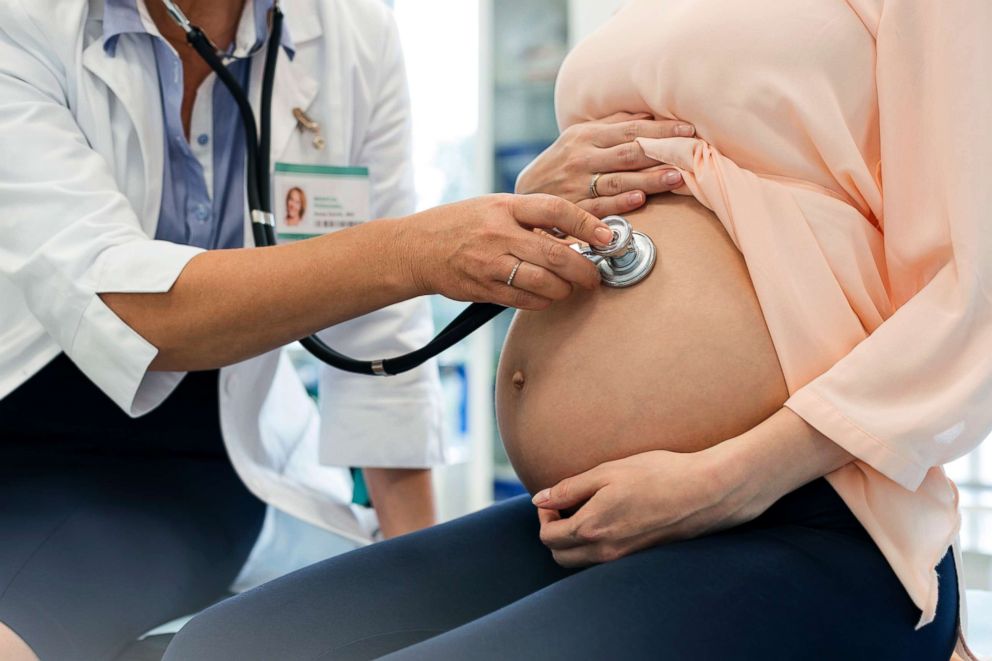Fetal alcohol syndrome in children up to 10 times more common than experts thought
— -- Experts previously thought that 1 percent of children are affected by the serious, permanent consequences of fetal alcohol spectrum disorders (FASD).
But they were underestimating it.
A new multisite study released by The Journal of the American Medical Association suggests that FASD are up to 10 times more common than they thought -- perhaps as high as one in 10 children.

Most people know that drinking alcohol during pregnancy can have serious consequences for the baby; central nervous system damage and physical defects are key features of FASD. To see how many children actually have FASD, researchers looked at 6,639 first-grade children from a general population of 13,146 in four different United States communities (Rocky Mountain, Midwestern, Southeastern, Pacific Southwestern regions). In the study, experts diagnosed FASD according to standardized clinical criteria -- the child’s growth, physical features and deformities, neurodevelopmental testing, and mom’s report of prenatal alcohol exposure.
They used these data to estimate how many children are affected nationally. A conservative approach suggests that 1 to 5 percent of children are affected; a less conservative approach suggests that 3 to 10 percent are affected.
One of the study’s authors, Christina Chambers, Ph.D., said, “For many years, we’ve known that estimates of the prevalence of FASD were gross underestimates for a variety of reasons. To get a better sense of prevalence is labor-intensive and expensive to do. It was done in other countries [like] Italy and South Africa, but one had not been done in the United States. If this is an issue, we need to be able to demonstrate in a concrete fashion how common it is.”
Only two out of 222 children with FASD in this study had been diagnosed before, indicating that underdiagnosis is a huge problem. A recent study published in Pediatrics estimated that 80 percent of FASD cases are missed and 7 percent are misdiagnosed as something else.
Physical features of FASD can be subtle, which makes diagnosis difficult for a non-expert. “It’s not something that if you were walking through a grocery store, you’d say, ‘Oh, this child has fetal alcohol syndrome,’” Chambers said. She said that the most common FASD type has very subtle physical features, but significant neurobehavioral problems.
She added, “There’s a reluctance on the part of the mom to admit to drinking, and on part of the pediatrician to ask. There’s the stigmatization of reporting it. It’s something we need to discuss.”
With rates of binge drinking soaring among reproductive-age women, it’s a conversation that’s long overdue. According to data from the National Epidemiologic Survey of Alcohol and Related Conditions, women ages 18 to 44 years old are binge drinking significantly more over the 10 years from 2001 to 2002 to 2012 to 2013. In that period, women reporting binge drinking went from 14 to 37 percent. Binge drinking is defined as having four or more alcoholic drinks at a time.

The American College of Obstetrics and Gynecology, the American Academy of Pediatrics and the American Academy of Family Physicians all agree that there is no “safe” amount of alcohol in pregnancy, and drinking is particularly dangerous to the developing fetus in the first trimester.
But Chambers was careful to advise, “You talk to women four weeks along and she says, ‘I’m really worried because I had a glass of wine.’ No one should say, ‘Oh my -- you’re at risk of having a child with FASD.’ The appropriate thing to say is, ‘Now that you know you are pregnant, it’s best to stop drinking.’
“The challenge is that [alcohol] is a part of our social fabric and we have upward of 40 percent of women who drink. Fifty percent of pregnancies are unplanned. How do you deal with that?” Chambers said. “The answer is to plan your pregnancy or think about your pattern of drinking. So if binging is a common event for you, don’t drink in a binging pattern because it is the riskiest pattern of drinking.”





